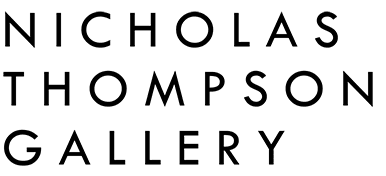KARLA MARCHESI FEATURED IN ‘ARTIST PROFILE’ ISSUE 64
PROCESS: Karla Marchesi
It’s funny that there is a psychological divorce as soon as my paintings leave the studio. My mind is already bubbling with beginnings of what to make next; what will follow from what came before. I’ve long held the view: work begets work – through the practice itself is where meaning resides. I hold the rigour of daily practice closely. For me it’s a promise of a life-long relationship, born of forgiveness. acknowledging that not all aims can be achieved in one painting, or one exhibition. My commitment is to material curiosity and time.
Through an art historical lens, my work refracts the socio-cultural anxieties of our age, critiquing what it means to be human at this present moment, under the conditions of late capitalism and anthropocentrism. Here I interweave allegoric deconstruction of ideological systems with autobiography, pathos, and humour. In recent years I’ve been drawn to the “Impossible Bouquet” popularised in seventeenth century Dutch still life painting. Burgeoning middle-class secular merchants championed this genre, where every bloom is impossibly bountiful (a simulacrum of nature). I am attracted to its symbolic ability to stand in for market-capitalism and Western worldviews.
These cultural constructions position nature as possessible. I paint complex entanglements of multigenus, fantastically hybridised flora in hyper-natural post-humanist scenes. In reimagined ecosystems I present non-human subjects as heroic, embodied with agency and generative possibility, subverting traditions of the genre and highlighting human folly, my own included.
I tell myself stories about the poetic potential of paint and dream of placing marks differently on the surface than I’ve previously done, offering a counter vision to what sits before me on the easel. This agitation provides an entry point for what comes next. Practically, my process is shaped by a preand post- internet age, employing digital resources in preparation and academic oil painting in execution. I scroll daily through Instagram for obscure, alien flora to screenshot and save; also cinema stills on YouTube. Palette references are also archived. These inputs alongside my internet-rabbit-hole-research of authors, artists, history, observations, exhibitions, and podcasts, rhizomatically thread through the tangled tenets of my thoughts and visions. This process seeds a working hypothesis and sets permeameters l take to the studio, as if a laboratory.
I don’t tend to sketch preliminary drawings. Compositions appear to me through a lengthy process of cataloguing and refining thousands of images I’ve saved in preparation for new work. I reorganise subfolders for weeks, as if undertaking an ganzfeld experiment on myself, committing images to memory. Shortlisted down to thirty or so potential compositions, I then prepare grounds – tinted oil prime on linen majors, some small aluminium minors. I assess the scale and surface of the canvas in front of me and assign them a starter pack: an individualised plastic sleeve filled with photos, printouts, and notes of intention. l compose directly on the surface, with raw or burnt sienna paint, beaming singular motifs, overlaying and collaging forms. This tangled web creates a set of conditions ripe with new possibility. The overpainting process involves decisions of what form to bring to the fore, what to hold onto. what new images to forge. The key is to not hold on too tight and to respond to what directives appear in the process of making.
The rabbit-hole-rhizome runs through my hand and brush and clarifies in oil and pigment. I start with a limited palette, building dark to light, wet into wet with lean mediums. I then glaze to increase chromatic depth and breath, problem-solving as needed. If my original palette doesn’t land, I glaze a transparent hue and work back into the surface. I document every work session of eight to fourteen hours a day, using the smartphone screen as a thumbnail to assess what needs resolution, and how to start the next studio session. When I find no more points of gnawing agitation, the painting is declared finished.
What stories to take into next time remain in my back pocket: a dream of softer edges and a lighter touch. Luckily, there is a lifetime promise in play.
